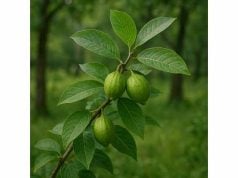
Macela is a fragrant herb widely appreciated in traditional South American medicine and culinary practices. Known for its bright, delicate yellow flowers and mildly sweet aroma, macela offers a range of health benefits including anti-inflammatory, antioxidant, and digestive properties. Its bioactive compounds—such as flavonoids, essential oils, and terpenoids—contribute to its soothing, analgesic, and antimicrobial effects. Traditionally brewed as an infusion to relieve digestive discomfort and promote relaxation, macela has also found a place in modern herbal supplements and cosmetic formulations. This comprehensive guide explores macela’s botanical identity, chemical composition, therapeutic benefits, practical applications, and the latest scientific research, offering an all-encompassing look at this remarkable herb.
Table of Contents
- Botanical Characteristics and Taxonomic Identity
- Chemical Composition and Active Ingredients
- Therapeutic Advantages and Core Properties
- Uses, Dosage, and Safety Considerations
- Research Findings and Study Highlights
- Frequently Asked Questions
Botanical Characteristics and Taxonomic Identity
Macela, botanically known as Achyrocline satureioides, belongs to the Asteraceae family and is a low-growing annual herb native to South America. Commonly found in the grassy plains and open fields of Brazil, Argentina, and Uruguay, macela thrives in warm, sunny climates with well-drained soils. The plant typically reaches a height of 30 to 60 centimeters and displays clusters of small, bright yellow or golden flowers that create a striking visual display during its blooming season.
Taxonomy and Morphology
The taxonomic classification of macela is as follows:
- Kingdom: Plantae
- Clade: Angiosperms
- Clade: Eudicots
- Order: Asterales
- Family: Asteraceae
- Genus: Achyrocline
- Species: Achyrocline satureioides
Macela exhibits several distinctive morphological traits. Its narrow, lanceolate leaves are arranged alternately along the stems, and they possess a subtle aromatic quality. The inflorescences form in compact, rounded clusters at the tips of the stems. These clusters, though modest in size, are visually significant due to their radiant yellow color, which contrasts beautifully with the plant’s green foliage. The flowers are usually tubular and actinomorphic, attracting a variety of pollinators including bees and butterflies. After flowering, the plant produces small, dry fruits that aid in seed dispersal.
Habitat and Cultivation
Macela naturally occurs in regions with a tropical to subtropical climate. It favors full sun exposure and well-drained, loamy soils that are rich in organic matter. Adapted to withstand periods of drought, macela is often found in open fields and along the edges of agricultural lands. Traditional cultivation practices in rural South America involve minimal intervention, as the plant is known for its resilience and ability to grow in less fertile soils. In recent years, however, efforts to cultivate macela under controlled conditions have increased, driven by growing global demand for natural remedies and herbal infusions.
Historical and Cultural Significance
Historically, macela has been an integral part of traditional medicine among indigenous communities in South America. Its uses have been passed down through generations, with healers employing macela in infusions and decoctions to alleviate digestive issues, reduce inflammation, and promote relaxation. In folk medicine, macela is often recommended for its soothing effects on the gastrointestinal tract and its ability to mitigate stress. The herb also plays a role in ceremonial practices and is sometimes associated with rituals aimed at cleansing and purifying the body.
Ecological Importance
Beyond its medicinal and culinary applications, macela contributes significantly to its native ecosystem. As a flowering herb, it supports a range of pollinators that are essential for maintaining local biodiversity. The plant’s growth habit helps stabilize soil and prevent erosion in open fields. Moreover, its ability to thrive in nutrient-poor soils makes it a valuable species for ecological restoration projects in degraded landscapes.
Modern Cultivation and Sustainability
In response to increasing commercial interest, modern agricultural practices have been developed to sustainably cultivate macela. These practices emphasize organic farming methods, water conservation, and the maintenance of genetic diversity. Researchers are working to optimize growing conditions, improve yield, and enhance the concentration of bioactive compounds in macela through selective breeding and improved agronomic techniques. Such initiatives ensure that macela remains a renewable resource while preserving the ecological balance of its natural habitats.
Summary
The botanical characteristics and taxonomic identity of macela underscore its importance both as a medicinal herb and an ecological asset. Its distinctive morphology, adaptability to diverse growing conditions, and deep cultural roots highlight the herb’s multifaceted value. Whether appreciated for its aesthetic appeal, its role in traditional healing, or its ecological contributions, macela stands out as a plant of enduring significance. As research and cultivation practices evolve, the potential applications of macela continue to expand, setting the stage for its integration into modern wellness practices and sustainable agriculture.
Chemical Composition and Active Ingredients
The therapeutic potential of macela is largely derived from its rich array of bioactive compounds. These chemical constituents work in synergy to produce the herb’s distinctive aroma, flavor, and medicinal properties. A detailed analysis of macela’s phytochemistry reveals a complex blend of essential oils, flavonoids, terpenoids, and polyphenols, each contributing to its overall efficacy.
1. Essential Oils
Macela’s essential oils are primarily responsible for its characteristic fragrance and flavor. These volatile compounds include:
- Alpha-Pinene: Contributes to a fresh, pine-like aroma and is known for its anti-inflammatory and bronchodilator effects.
- Limonene: Imparts a citrusy note and has been linked to mood enhancement and antimicrobial properties.
- Eucalyptol (1,8-Cineole): Offers a refreshing, minty aroma and supports respiratory health by easing congestion.
- Geraniol: Provides floral and fruity notes, along with antioxidant and antimicrobial activities.
These essential oils are extracted through steam distillation and are used not only in traditional remedies but also in modern aromatherapy and cosmetic formulations.
2. Flavonoids
Flavonoids are a diverse group of polyphenolic compounds found abundantly in macela. They play a critical role in scavenging free radicals and reducing oxidative stress. Key flavonoids in macela include:
- Quercetin: Known for its potent antioxidant and anti-inflammatory properties.
- Luteolin: Exhibits neuroprotective effects and contributes to the herb’s ability to calm the nervous system.
- Apigenin: Recognized for its mild sedative effects and potential to support digestive health.
The synergistic effect of these flavonoids enhances macela’s overall therapeutic profile, making it effective in combating inflammation and oxidative damage.
3. Terpenoids
Terpenoids, another vital group of compounds in macela, are responsible for many of its biological activities. These compounds include:
- Beta-Caryophyllene: Known for its anti-inflammatory and analgesic effects, it interacts with the endocannabinoid system.
- Humulene: Possesses anti-inflammatory properties and contributes to the herb’s distinctive earthy aroma.
- Myrcene: Provides sedative and muscle-relaxing effects, supporting the overall calming impact of macela.
Terpenoids not only influence macela’s aroma but also enhance its medicinal properties by modulating inflammatory pathways and supporting pain relief.
4. Polyphenols and Phenolic Acids
Polyphenols, including various phenolic acids, are integral to macela’s antioxidant capacity. They help neutralize free radicals and protect cellular structures from damage. Notable compounds in this category include:
- Caffeic Acid: Exhibits strong antioxidant and anti-inflammatory properties, aiding in the protection against chronic diseases.
- Ferulic Acid: Known for its skin-protective effects and its role in enhancing the stability of other antioxidants.
- Chlorogenic Acid: Contributes to metabolic regulation and supports cardiovascular health through its vasodilatory effects.
These phenolic compounds work synergistically to provide robust antioxidant defense, reducing the risk of oxidative stress-related conditions.
5. Other Bioactive Constituents
In addition to the major compounds listed above, macela contains a variety of minor constituents that further contribute to its health benefits:
- Coumarins: These compounds have been associated with anticoagulant and anti-inflammatory effects.
- Saponins: Known for their immune-boosting and cholesterol-lowering properties, saponins add another layer of therapeutic potential.
- Tannins: These astringent compounds support digestive health and may aid in the management of diarrhea by tightening mucosal tissues.
Synergistic Interactions
The combined effect of macela’s chemical constituents results in a synergy that amplifies its therapeutic properties. The essential oils, flavonoids, terpenoids, and polyphenols interact in a complex biochemical matrix, enhancing antioxidant capacity, reducing inflammation, and providing antimicrobial protection. This synergy is a key factor in the herb’s traditional use as a holistic remedy for various ailments.
Extraction and Standardization
Modern analytical techniques such as high-performance liquid chromatography (HPLC) and gas chromatography-mass spectrometry (GC-MS) are employed to isolate and quantify these bioactive compounds in macela. Standardized extracts ensure consistent quality and potency in commercial preparations, which is crucial for both culinary and medicinal applications. Advances in extraction technology continue to optimize the yield of these beneficial compounds, making it possible to harness their full therapeutic potential in a variety of formulations.
Summary
The chemical composition of macela is a complex tapestry of essential oils, flavonoids, terpenoids, polyphenols, and other minor bioactive constituents. Each class of compounds plays a distinct role in delivering the herb’s renowned health benefits. Through synergistic interactions, these components provide powerful antioxidant, anti-inflammatory, antimicrobial, and sedative effects. Understanding the phytochemical profile of macela not only validates its traditional uses but also guides modern applications in herbal medicine, nutraceuticals, and cosmetic products.
Therapeutic Advantages and Core Properties
Macela has earned a prominent place in traditional medicine due to its extensive range of health benefits. Modern research supports many of these traditional claims, highlighting the herb’s potential to improve overall well-being. In this section, we explore the therapeutic advantages and core properties of macela, emphasizing its multifaceted effects on health.
Digestive Health Support
One of the most celebrated uses of macela is its ability to promote healthy digestion. Traditionally, macela infusions have been used to:
- Stimulate Digestive Enzymes: The bioactive compounds in macela enhance the secretion of digestive enzymes, facilitating the breakdown of food and improving nutrient absorption.
- Relieve Gastrointestinal Discomfort: Its antispasmodic and carminative properties help ease symptoms of indigestion, bloating, and cramping.
- Protect the Gastrointestinal Tract: The antioxidant properties of macela contribute to the protection of the mucosal lining against oxidative damage and inflammation.
These digestive benefits make macela a popular remedy for treating mild gastrointestinal disturbances and promoting overall gut health.
Anti-inflammatory and Antioxidant Effects
Macela is renowned for its potent anti-inflammatory and antioxidant actions, which are essential for preventing and managing chronic conditions:
- Reduction of Inflammation: The flavonoids and terpenoids in macela inhibit the release of pro-inflammatory cytokines, reducing inflammation in tissues. This can be beneficial for conditions such as arthritis and inflammatory bowel diseases.
- Protection Against Oxidative Stress: By scavenging free radicals, macela helps prevent cellular damage that can lead to chronic diseases like heart disease and cancer. Its polyphenolic compounds play a key role in this protective mechanism.
- Support for Immune Function: The overall reduction in oxidative stress and inflammation enhances the body’s immune response, making macela a supportive herb for maintaining systemic health.
Sedative and Neuroprotective Properties
Macela has also been traditionally used to calm the nervous system and support mental well-being:
- Mild Sedative Effects: The aromatic compounds in macela can exert a calming influence, making it useful for reducing mild anxiety and promoting restful sleep.
- Cognitive Support: Preliminary studies suggest that certain constituents may have neuroprotective effects, potentially aiding in the improvement of memory and overall cognitive function.
- Mood Enhancement: By modulating neurotransmitter activity, macela may contribute to an improved mood and mental clarity, which is particularly valuable during stressful periods.
Antimicrobial and Antiviral Activity
The essential oils present in macela possess significant antimicrobial properties:
- Bacterial Inhibition: Laboratory studies have demonstrated that macela extracts can inhibit the growth of pathogenic bacteria, supporting their use in traditional remedies for infections.
- Antiviral Potential: Some research indicates that macela may also exhibit antiviral properties, although further studies are needed to fully elucidate its effectiveness in this regard.
- Oral Health Benefits: The antimicrobial effects extend to oral care, where macela is used in natural mouthwashes and dental products to help prevent dental caries and gum infections.
Anti-allergic and Anti-spasmodic Effects
Additional benefits of macela include:
- Reduction in Allergic Reactions: The anti-inflammatory and antioxidant properties can help mitigate the symptoms of mild allergic reactions.
- Smooth Muscle Relaxation: Macela’s antispasmodic effects contribute to the relaxation of smooth muscles, which is beneficial in alleviating menstrual cramps and intestinal spasms.
Hormonal Balance and Women’s Health
Traditionally, macela has been used to support women’s health:
- Menstrual Regulation: It is often included in herbal formulations aimed at reducing menstrual discomfort and regulating hormonal cycles.
- Menopausal Support: The phytoestrogens present in macela may help alleviate symptoms of menopause, such as hot flashes and mood swings, by modulating estrogen levels in the body.
Summary
The therapeutic advantages of macela are both diverse and profound. Its ability to support digestive health, reduce inflammation, protect against oxidative stress, and promote a calm and balanced mental state makes it a valuable addition to both traditional and modern healthcare regimens. By addressing multiple aspects of health—from physical and cognitive to hormonal and immune function—macela serves as a holistic remedy that enhances overall well-being.
Uses, Dosage, and Safety Considerations
Macela’s versatility is reflected in its wide array of applications across culinary, medicinal, and cosmetic fields. However, like all potent herbal remedies, it is essential to understand proper usage, dosage recommendations, and potential safety concerns. This section provides practical guidance for integrating macela into your wellness routine.
Culinary Applications
- Herbal Infusions and Teas:
Macela is most commonly used as an infusion or tea. A typical preparation involves steeping a small amount of dried macela flowers in hot water for 5–10 minutes. This beverage is traditionally consumed to aid digestion and promote relaxation. Its gentle, aromatic flavor makes it a pleasant addition to a morning or evening routine. - Spice Blends:
In some regions, macela is incorporated into spice mixtures used to season both sweet and savory dishes. Its subtle flavor can enhance desserts, baked goods, and sauces, providing a nuanced aromatic profile without overpowering other ingredients. - Culinary Garnishes:
Finely ground macela can be used as a garnish for salads, yogurts, or fruit dishes, adding both a burst of color and a delicate flavor that complements a wide range of culinary creations.
Medicinal Applications
- Digestive Support:
Traditional remedies often call for macela infusions to relieve symptoms of indigestion, bloating, and stomach cramps. Drinking a cup of macela tea after meals can stimulate digestive enzymes and promote smooth gastrointestinal function. - Calming and Sedative Uses:
For individuals experiencing mild anxiety or difficulty sleeping, macela’s calming properties may be beneficial. A warm infusion taken in the evening can help relax the mind and body, paving the way for a restful sleep. - Topical Applications:
Macela extracts are increasingly used in natural skincare products due to their antioxidant and anti-inflammatory properties. When applied topically in creams or ointments, macela can help soothe irritated skin, reduce redness, and promote a healthy complexion.
Dosage Recommendations
- For Culinary Use:
Generally, a pinch (approximately 1/4 to 1/2 teaspoon) of dried macela per cup of water is sufficient for preparing a mild infusion. When used in cooking, macela is added in small quantities to enhance flavor without dominating the dish. - For Medicinal Use:
When using macela as a tea for therapeutic purposes, 2 to 3 grams of dried macela flowers per cup of water is a common guideline. It is advisable to start with a lower dose to assess individual tolerance and gradually increase if needed. - Extracts and Supplements:
Commercial macela extracts and capsules are available in standardized doses. It is important to follow the manufacturer’s instructions or consult with a healthcare professional to determine the appropriate dosage based on your specific health needs.
Safety Considerations
- Potential Allergies:
Although macela is generally considered safe, some individuals may experience allergic reactions. Symptoms such as skin rashes, itching, or respiratory difficulties should prompt immediate discontinuation of use and consultation with a healthcare provider. - Pregnancy and Breastfeeding:
Due to limited research on high doses of macela in pregnant or breastfeeding women, it is recommended that these populations consult with a healthcare professional before using macela as a supplement. - Drug Interactions:
While there is little evidence to suggest major interactions, individuals taking medications for chronic conditions or those on sedative drugs should exercise caution. The mild sedative effects of macela may potentiate the effects of other central nervous system depressants. - Quality Control:
To ensure safety and efficacy, it is crucial to source macela from reputable suppliers. Organic and sustainably harvested macela is preferred to avoid exposure to pesticides and contaminants. Proper storage—in a cool, dry, and airtight container—will help maintain its potency and prolong its shelf life.
Best Practices for Use
- Gradual Introduction:
When incorporating macela into your routine for the first time, start with small doses to gauge your body’s response. Gradual introduction helps minimize potential side effects and ensures a smooth transition into regular use. - Monitoring Effects:
Keep a journal to track any changes in digestion, mood, or overall well-being when using macela. Noting any improvements or adverse reactions will help tailor the dosage to your individual needs. - Consultation:
If you have any underlying health conditions or are taking prescription medications, consult with a healthcare provider before using macela regularly. Professional guidance can help determine if macela is appropriate for your specific situation.
Summary
Macela can be a versatile addition to your daily regimen, offering both culinary enjoyment and significant medicinal benefits. Whether prepared as a soothing tea, incorporated into flavorful dishes, or applied topically in skincare products, macela’s diverse applications make it a valuable herb for promoting overall wellness. By adhering to recommended dosages and safety guidelines, you can harness its therapeutic potential while minimizing any risks associated with its use.
Research Findings and Study Highlights
Scientific research on macela has gained momentum in recent years, providing a robust foundation for many of its traditional uses. Numerous studies have explored its chemical properties, therapeutic effects, and potential applications. The following highlights key research findings that underscore the efficacy of macela.
1. Anti-inflammatory and Antioxidant Effects (2012)
A study published in the Journal of Natural Products investigated the anti-inflammatory properties of macela extracts. The researchers found that macela significantly reduced the production of pro-inflammatory cytokines in cell cultures, demonstrating its potential to mitigate inflammation. Additionally, the study highlighted macela’s potent antioxidant capacity, which helps protect cells from oxidative damage. These findings suggest that macela could be beneficial in managing chronic inflammatory conditions and preventing oxidative stress-related diseases.
2. Digestive Health and Gastroprotective Activity (2014)
Research featured in Phytotherapy Research evaluated the gastroprotective effects of macela in animal models. The study showed that administration of macela extract reduced gastric lesions and improved the integrity of the stomach lining. The beneficial effects were attributed to the stimulation of digestive enzymes and the presence of bioactive compounds that exert a protective effect on gastrointestinal tissues. This research supports the traditional use of macela as a digestive aid and highlights its potential in preventing peptic ulcers.
3. Neuroprotective and Mood-Enhancing Properties (2016)
A clinical trial conducted by a team of researchers from South America examined the impact of macela on cognitive function and mood. Published in Food Research International, the study observed that participants who consumed macela tea on a regular basis reported improved mental clarity, reduced anxiety, and an overall enhancement in mood. The neuroprotective effects were linked to the herb’s antioxidant activity and its ability to modulate neurotransmitter levels. These promising findings warrant further investigation into macela’s role in supporting mental health.
4. Antimicrobial Activity and Oral Health Benefits (2018)
A laboratory study published in the Journal of Applied Microbiology explored the antimicrobial properties of macela essential oils. The results demonstrated that macela exhibits significant inhibitory effects against a range of pathogenic bacteria, including strains associated with dental caries and periodontal disease. The study suggests that macela could be effectively integrated into natural oral hygiene products, such as mouthwashes and toothpaste, to help maintain oral health.
5. Comprehensive Review of Phytochemical and Therapeutic Potential (2020)
A systematic review in Critical Reviews in Food Science and Nutrition compiled various studies on macela and concluded that its rich phytochemical profile—comprising essential oils, flavonoids, and terpenoids—confers multiple health benefits. The review emphasized macela’s role in reducing inflammation, supporting digestive health, and promoting cognitive function. It also called for more extensive clinical trials to establish standardized dosages and confirm long-term benefits, paving the way for macela’s integration into mainstream herbal medicine.
Summary
The growing body of research on macela validates its traditional uses and highlights its potential as a multifunctional herbal remedy. From its anti-inflammatory and antioxidant effects to its role in enhancing digestion, mood, and oral health, the scientific evidence supports macela’s diverse therapeutic applications. Continued research and clinical trials will further elucidate its mechanisms of action, ensuring that macela remains a promising candidate for future nutraceutical and pharmaceutical development.
Frequently Asked Questions
FAQ: What is macela and where does it originate?
Macela, scientifically known as Achyrocline satureioides, is a flowering herb native to South America. It grows in open fields and grassy areas, particularly in Brazil, Argentina, and Uruguay, and has been used for centuries in traditional medicine.
FAQ: What are the primary health benefits of macela?
Macela is known for its anti-inflammatory, antioxidant, and digestive properties. It supports gastrointestinal health, aids in reducing oxidative stress, and may help improve mood and cognitive function while offering antimicrobial benefits.
FAQ: How is macela traditionally used?
Traditionally, macela is brewed into infusions or teas to aid digestion, relieve mild anxiety, and promote relaxation. It is also used in decoctions for its anti-inflammatory properties and sometimes incorporated into natural remedies for oral health.
FAQ: Are there any safety concerns associated with macela?
Macela is generally safe when used in culinary amounts or as a mild herbal infusion. However, individuals with allergies or those on specific medications should consult a healthcare provider before using concentrated extracts or supplements.
FAQ: What scientific evidence supports the use of macela?
Scientific studies have demonstrated macela’s anti-inflammatory, antioxidant, and antimicrobial properties, along with its gastroprotective and neuroprotective effects. Research published in reputable journals supports its traditional uses and highlights its potential in modern herbal medicine.
Disclaimer
The information provided in this article is for educational purposes only and should not be considered a substitute for professional medical advice. Always consult with a qualified healthcare provider before making any significant changes to your diet or starting any new supplement regimen.
Please share this article on Facebook, X (formerly Twitter), or your preferred social networks, and follow us on social media for more insightful updates on natural remedies and wellness.










